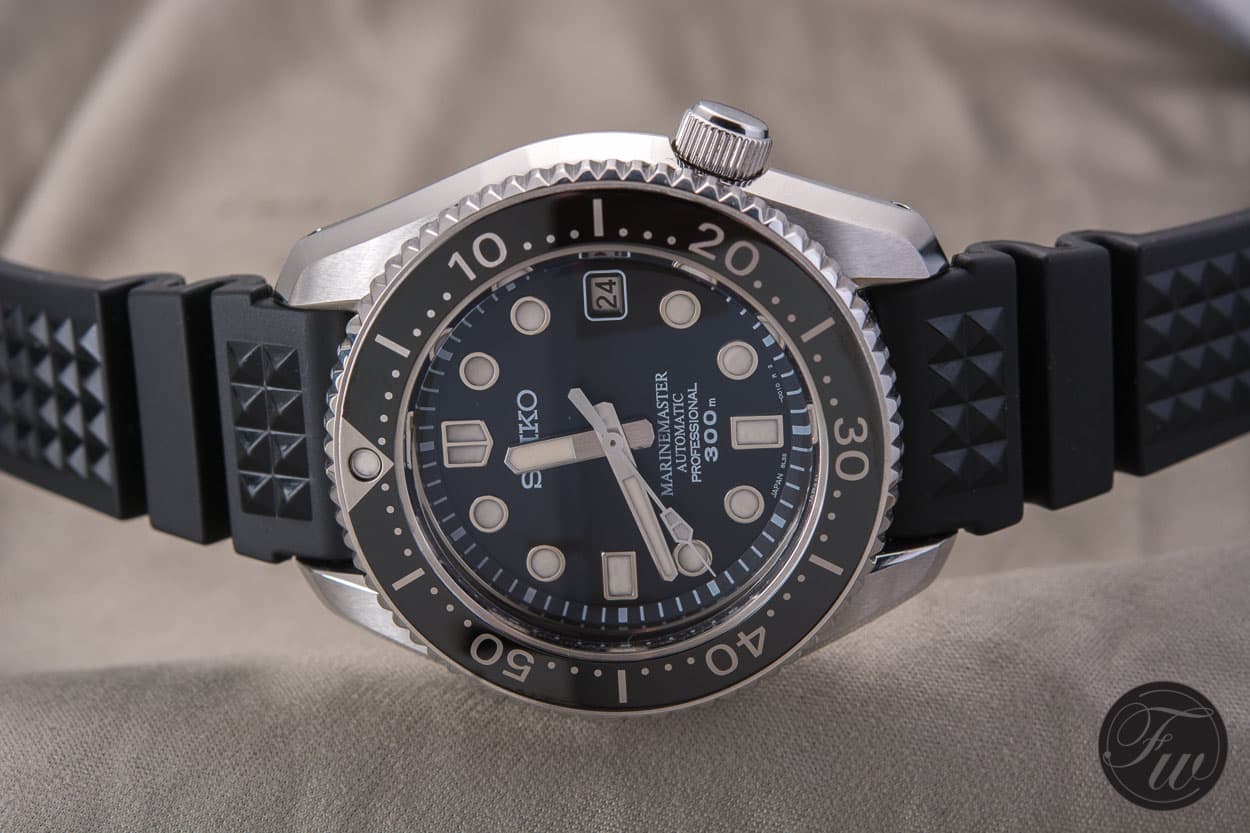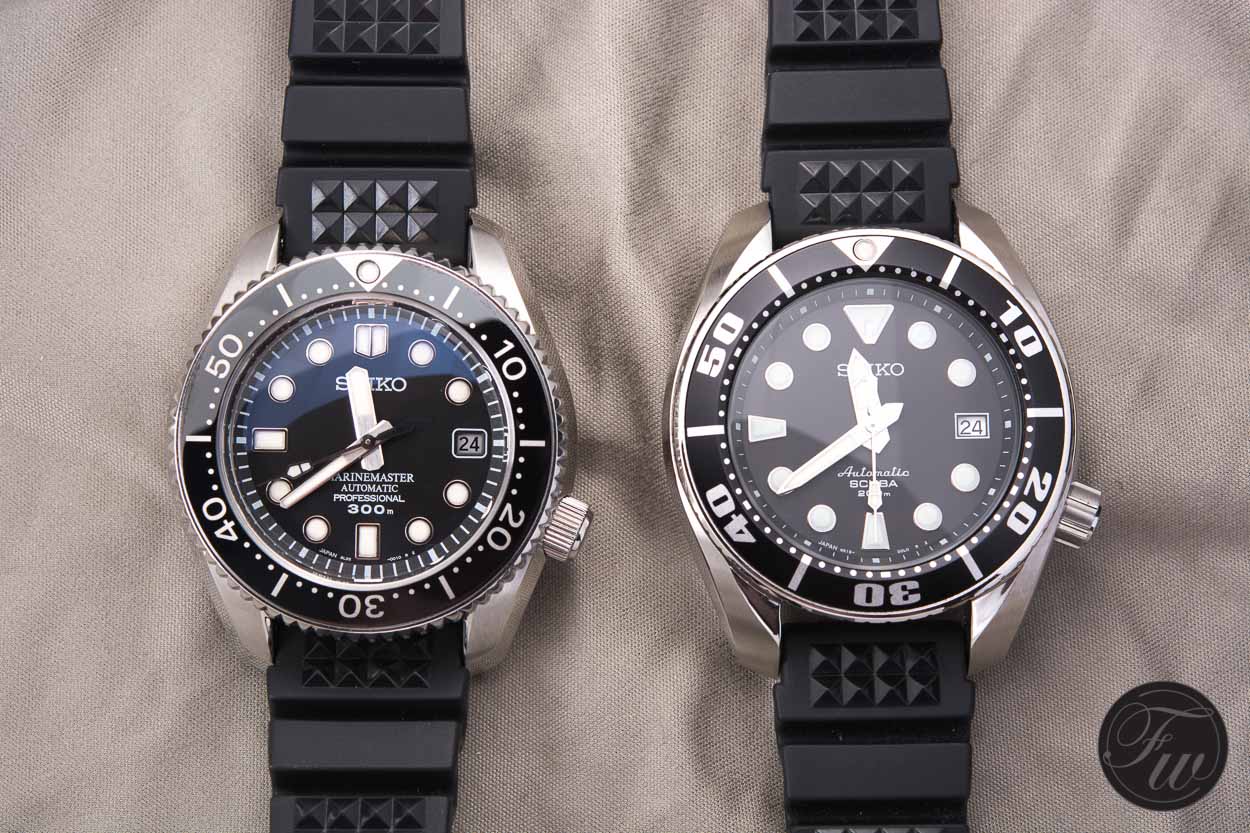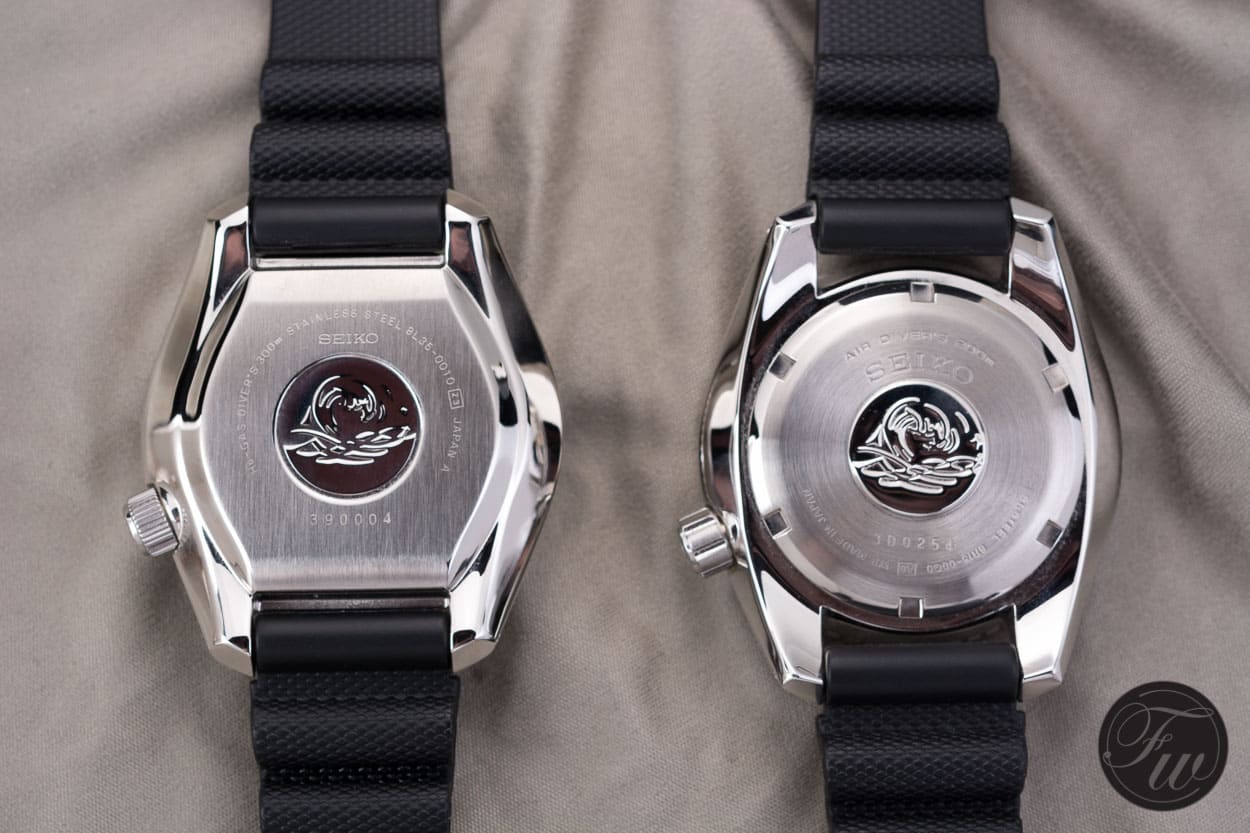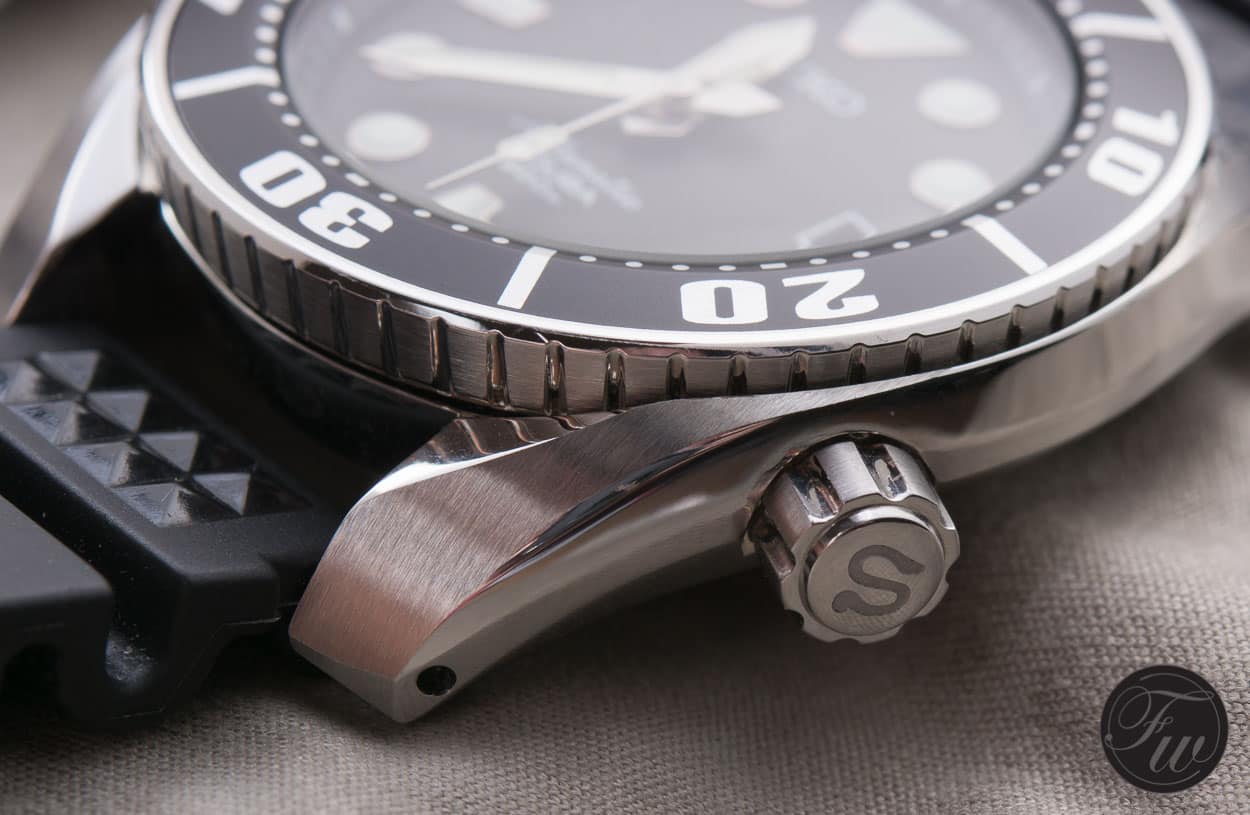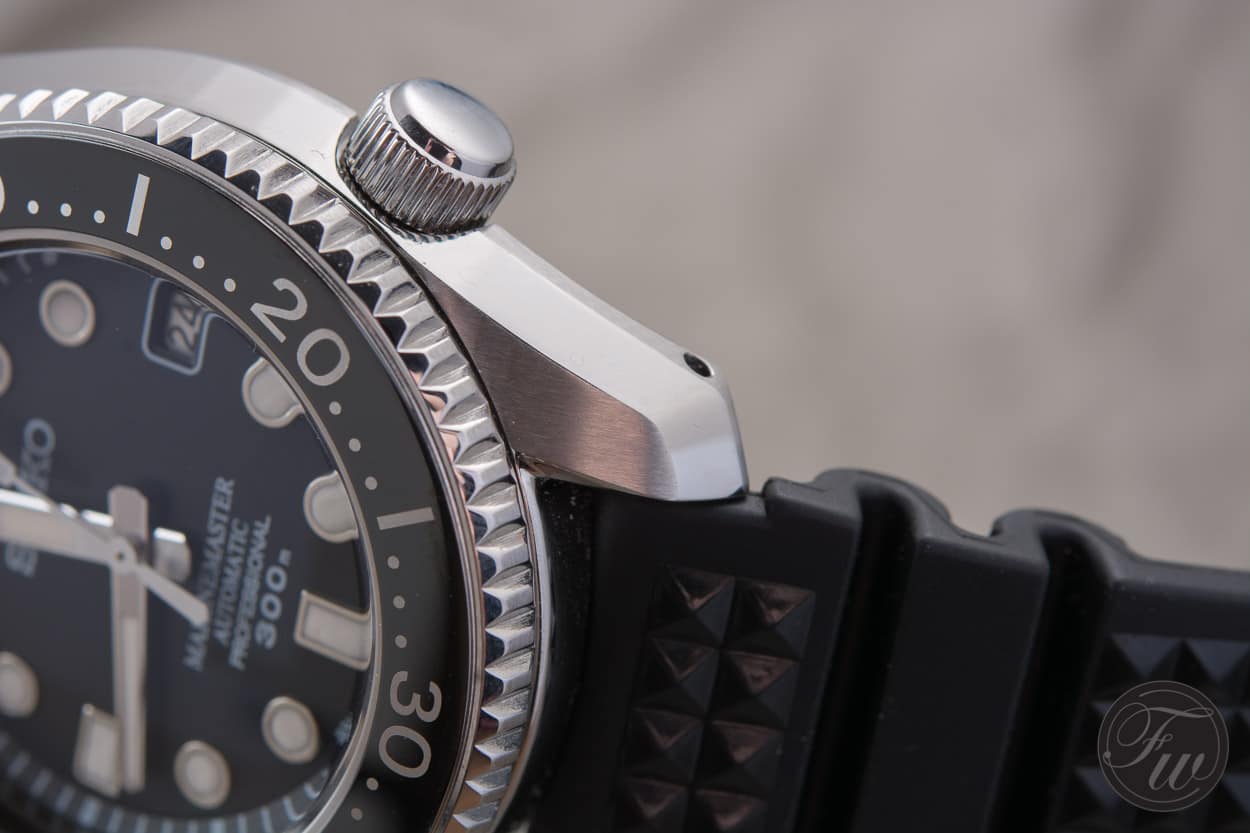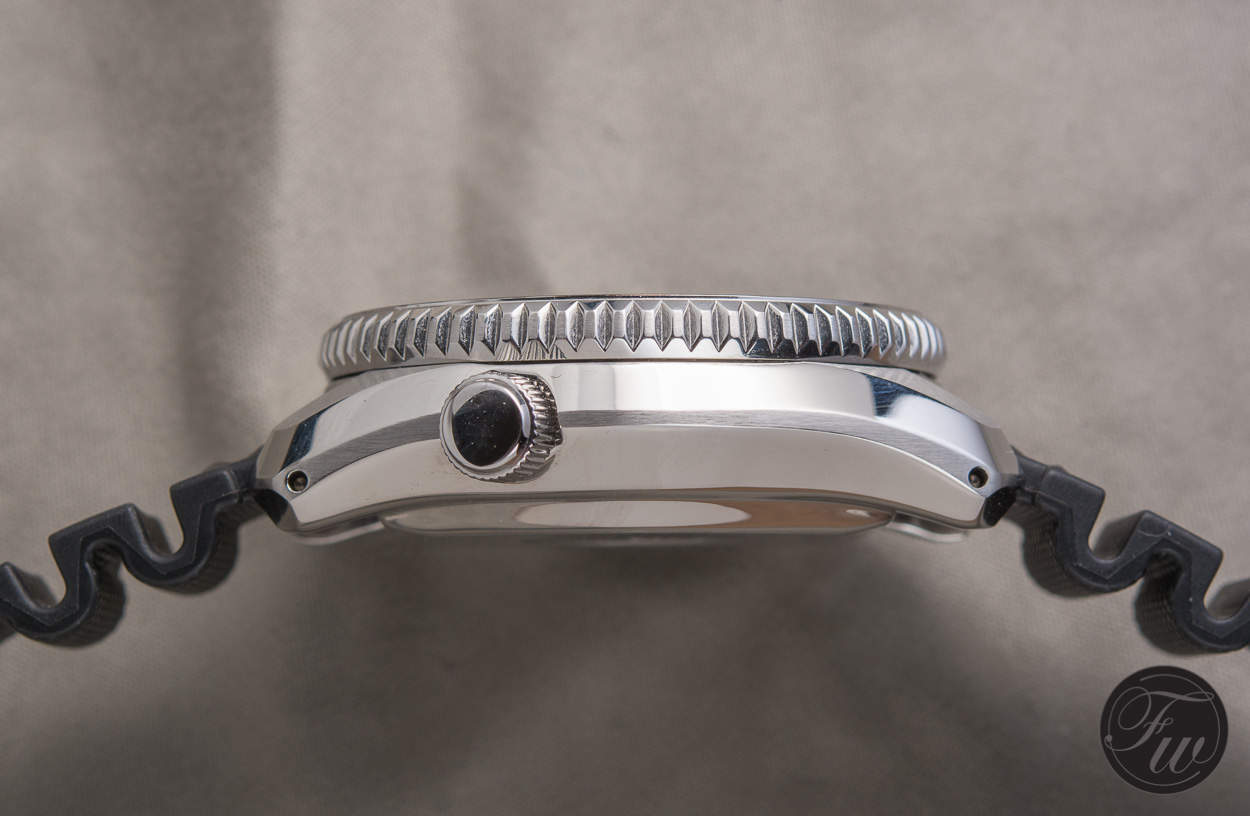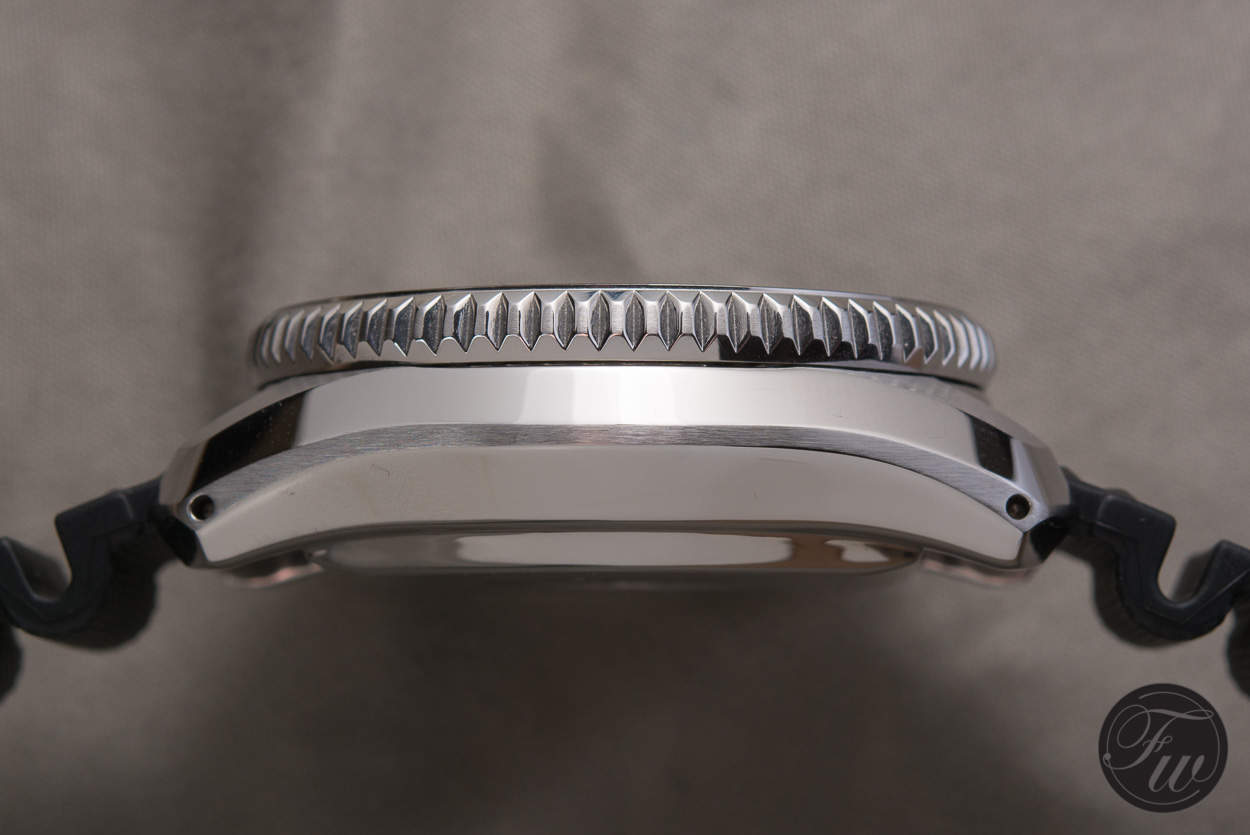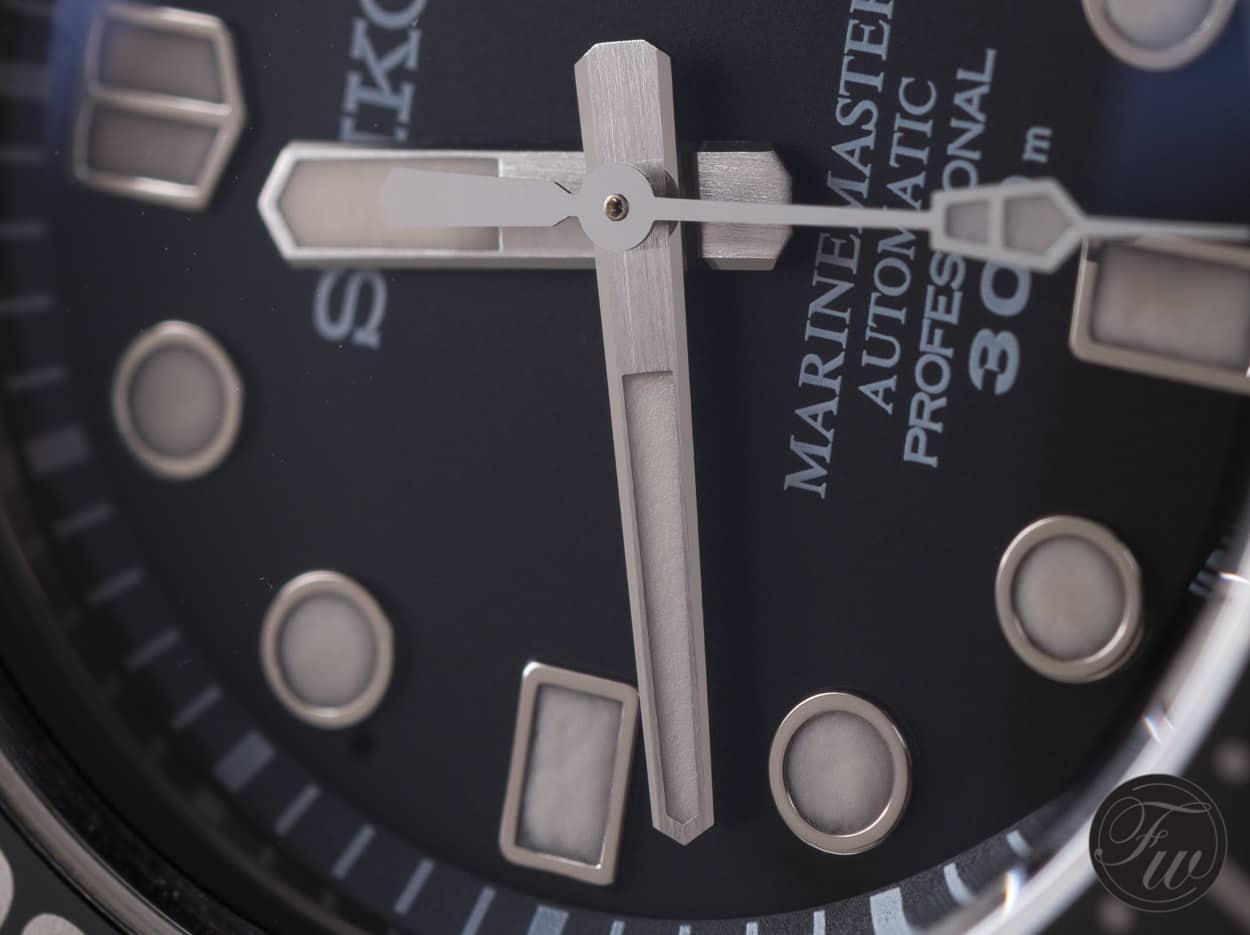Hands-On Seiko Marinemaster 300 SBDX001 Review
Seiko Marinemaster
Last year, I bought a handful of Seiko watches. Mainly just for the fun of it, but I quickly learned that these are quite serious watches in terms of what they have to offer. I bought a Seiko ‘Baby Tuna’ SRP231 after I saw it for the first time in the Seiko boutique in Amsterdam. I decided to ‘import’ it myself to save a quick buck (but FedEx did a friendly gesture of handing it over to customs so I didn’t have to declare it myself, or to be sure that they are getting their kickback-fee from Dutch customs). Next up was a Scuba 200 meters (SBDC001) also known as the ‘Sumo’, a SKX007 and a vintage 6309-7049.
Now, it is here!
All great watches that list well below 500 Euro (or USD for that matter). When I bought the Seiko SBDC001, I also had a peek at its more expensive (> $2000 USD list price) Seiko Marinemaster 300 brother with reference number SBDX001. This model, the Seiko Marinemaster Automatic Professional 300 SBDX001 looked quite similar but I wasn’t into Seiko enough to pull the trigger on that one.
Now, a few months later, the Seiko Marinemaster 300 is on my wrist for a couple of weeks and it is time for a review.
 Seiko SBDX001
Seiko SBDX001
Let’s start by giving you some background information on this model. I am pretty sure that if you searched for the Seiko Marinemaster 300, you’ve probably already read your share about this timepiece. This watch is a mighty interesting timepiece but isn’t exactly new to the game. The Seiko Marinemaster 300 was already introduced in the early 2000s. However, the very first Seiko divers watch was already introduced in 1965 (the Seiko reference 62MAS-010).
Reference 6215 and 6159
Although Seiko decided to introduce a 50th anniversary version of the Seiko Marinemaster 300 I am reviewing here, the real ancestor of the Marinemaster 300 was not produced until 1967 (reference 6215) and perhaps the reference 6159 from 1968 looks even more similar to the current Seiko Marinemaster 300 SBDX001.
50 years or a bit less, it is more history some of its Swiss or German counterparts have with their diving watches. Approximately 50 years of developing diving watches means that you can be sure that Seiko knows how to deal with serious diving and create watches that are able to withstand the pressure divers (and their watches) experience at great depth. Not only that, but they also know the necessary requirements on usability and readability.
Prospex – Professional Specifications
I am no diver myself, I hardly even swim, but I do love the look and feel of diving watches and have (had) my share of them from various brands. This Seiko Marinemaster 300 is part of the ‘Prospex’ range of Seiko, which means ‘Professional Specifications’ or ‘Serious watches for serious sports’ as Seiko puts it on their own website. The aforementioned Sumo and Baby Tuna are also part of that Prospex range though, and so are the Kinetic models we’ve talked about here.
So, what makes this Seiko Marinemaster 300 stand-out from, let’s say, the cheaper SBDC001 ‘Sumo’ model for instance? It is a much heard question since I’ve worn this watch actually (as for many people Seiko is being associated with < 1000 USD watches).
Seiko MM300 versus Sumo
On the photo above, you’ll see the Seiko Marinemaster 300 on the left and the Seiko Scuba (Sumo) on the right. I’ve put them both on the rubber strap that comes with the Marinemaster 300, since I like the look of them and am ‘not ready’ for the Seiko bracelet yet (more later).
Similar Appearance
The appearance of these watches is quite similar, admitted. However, the difference is in the details of course. The Seiko Marinemaster 300 uses a movement (caliber 8L35) said to be based on the Grand Seiko caliber 9S55 but just less nicer (optically) finished. Since the Seiko Marinemaster has no display back, the movement can’t be observed. However, in this link you’ll find an in-depth article on the 8L35 movement. The Sumo has Seiko caliber 6R15, which can be found in a number of Seiko watches. It is basically an evolution of the 7S calibers, with more power reserve and some other small improvements.
Monobloc Case
If we turn the watches around, they still look very similar but note that the Seiko Marinemaster 300 has a monobloc case. This means the case consists of two parts (and not three), so the dial, hands and movement need to come out via the front of the watch (after removal of the bezel and the crystal). Just like the original Omega Seamaster Ploprof 600M (we reviewed that one here), the use of a monobloc case also means a helium escape valve (as seen on the Rolex Sea-Dweller for example) is not necessary.
The case back has the “Tsunami” logo and Seiko engraved a bit of information on model name and number, movement caliber number and its serial number. The case back has a beautiful brushed finish (on both), where the brush on the Seiko Marinemaster seems to has a deeper grain as well. The engraving on the Seiko Marinemaster 300 is also sharper, perhaps because it has been engraved while the text on the Sumo case back seems to be ‘pressed’ into the stainless steel.
 High Quality Finish
High Quality Finish
The finish of the case of the Seiko Marinemaster 300 is of very high quality, with its polished and brushed facets it can easily compete to its Swiss competition. The Sumo is nice as well, and has nice brushed lugs for example (see below) that you don’t see on some Swiss +/- €1000 Euro timepieces. I dare to say that this SBDC001 Sumo is able to compete to watches from Swiss manufacturers that have a doubled price tag of this Seiko.
Case and Crown
However, let’s stick to the Seiko Marinemaster 300 for now. The case measures 44mm in diameter and is 15mm thick. Despite these dimensions, it actually wears very modest as the bezel diameter is smaller and the lug-to-lug size is quite long. The crown is located at 4 o’clock, which prevents it from sticking into the top of your hand (leaving marks). One of the first things you will notice is that the crown is unsigned. This might be a bit of let-down at first, but it perfectly resembles those first Seiko reference 6159 diver watches who also didn’t have a signed crown.
Glossy Bezel
The photo below will also show the glossy bezel from up close, which isn’t ceramics, but just stainless steel with lacquer (and some polishing has been done of course). It looks wonderful but keep in mind that it can be scratched of course. The bezel is easy to grasp and clicks very gently 120 times per 360 degrees turn. There’s almost no play in the bezel, which makes it a solid partner for real divers. The pearl at 12 o’clock uses Lumibrite (like the dial and hands, but more on those later) and is very luminous.
Lug Holes
As said, the case is very nicely finished. The case band has a small brushed part and the upper and lower angled parts are highly polished. The case is slightly curved but the case back is very flat which makes it a comfortable watch on the wrist. You could say the case back is tonneau shaped (as pictured above). The lugs have holes in them, so you will be able to change the bracelet or strap yourself using a proper tool. The watch comes with a stainless steel bracelet and the rubber strap as pictured in this article.
Dial and Hands
As I’ve already written, the details make the difference with this Seiko Marinemaster 300 and the dial and hands are really something different. To start with the hands, these have a very nice and subtle brushed finish and are filled with an off-white coloured Lumibrite material. Lumibrite is Seiko’s answer to Super Luminova. Lumibrite has to be charged by (sun) light of course and will glow in the dark for about 3 – 5 hours, depending on the exposure to sun light or artificial light. I have watches with all kinds of luminous material, like tritium, (Super) Lumoniva and Lumibrite and I can say that this Seiko Marinemaster (or any other Seiko I own with Lumibrite) is pretty impressive regarding its luminosity.
Lumibrite
Back to the hands though, below a close-up of the hour, minute and seconds hands of the Marinemaster 300. It shows the brushed hour and minutes hand and a polished seconds hand. It also demonstrates the very clear and sharp printing of the lettering on the dial. All hour markers are filled with Lumibrite, where the hour markers at 12 o’clock, 9 o’clock and 6 o’clock have different shapes from the others. They are all captured in silver coloured rings and frames giving it a classy look. It was already used in those very first models from the 1960s, where Rolex still used tritium markers only (and rings didn’t came until the 1980s). For some a pro, to others a con. I actually like these metal colored frames and rings around the hour markers.
The minute track is printed on the outer ring, which is under a small angle making the actual dial look a bit smaller than it really is.
Rubber Strap and Bracelet
Now for the strap, or bracelet.. The Seiko Marinemaster 300 is being delivered with both a stainless steel bracelet and a rubber strap. The bracelet looks quite similar to the Omega Speedmaster Professional bracelet with regards to the design. However, the clasp looks entirely different. While there is absolutely nothing wrong with the comfort of the bracelet (you can even easily adjust the clasp using a slide), it is the finish of the bracelet that doesn’t live up to the rest of this watch. You can debate whether comfort wins it over optical finish, but I think that in this price range this is where Seiko has a few steps to make to compete with the bracelet from the Swiss and German competition. The same goes for the bracelet on the Sumo SBDC001 that I have. I just took them off as I feel it is not on par with the rest of the watch. There are a lot of third parties that jump into that gap and create really nice looking and solid feeling alternative bracelets for the SBDX001 and SBDC001 (and other Seiko models for that matter).
Rubber
So, I just put on the rubber that came with it, and really like it. It resembles the rubber straps those first reference 6159-7001 models came on. Some people do not like the little triangle shapes on it, but the 20mm lug size makes it very easy to add any type of strap you want. There is a big selection of suitable leather straps or rubber Isofrane straps that will perfectly match the Seiko Marinemaster 300.
Concerns about the SBDX001
Any other cons about this watch? Perhaps not a negative thing per se, but the crystal isn’t made of sapphire but made of Hardlex instead. Seiko’s Hardlex material will not shatter like sapphire when it is being damaged though, it just cracks but will still be in one part. Hardlex will be easier to scratch than sapphire though. Thick sapphire crystals for diving watches seem to be still relative expensive so cost might have been the decisive factor here.
Availability
Last but not least, the availability of this watch in Europe is still a bit troublesome. The Seiko Marinemaster 300 is officially exported to Germany and France and has a €2000 Euro list price over there. I would love to see this watch at more European Seiko retailers (the Amsterdam boutique of Seiko also carried it in their import section) so people are able to see with their own eyes how this watch from Japan compares to the usual suspects from Switzerland.
Value for Money
Whether this has to do with the policy of Seiko in Japan on their approach of markets outside Japan or that Seiko retailers are not ready for it (yet) is not known to me. I definitely feel this Seiko Marinemaster 300 should be out there and available to anyone who is into mechanical diving watches. This way, the consumer can see (and feel) for himself whether the Seiko Marinemaster 300 is an interesting alternative to the usual suspects. I am in any case convinced this Seiko is great value for money (something long time owners and collectors of Seiko’s professional divers already knew) and can easily compete with watches made in Europe that have higher price tags on them.
SBDX012
Now, in 2015, Seiko just put the 50th anniversary version of this Seiko Marinemaster 300 SBDX001 on the market. The reference SBDX012, with gold accents on the bezel and dial. Lettering on the dial is also gold coloured. Only 1000 of these pieces are being made and most of them have been sold already. Below two photos of the SBDX012, one together with the vintage 1968 reference 6159-7000. Photos by Stefan Mollin (make sure to check-out his website).
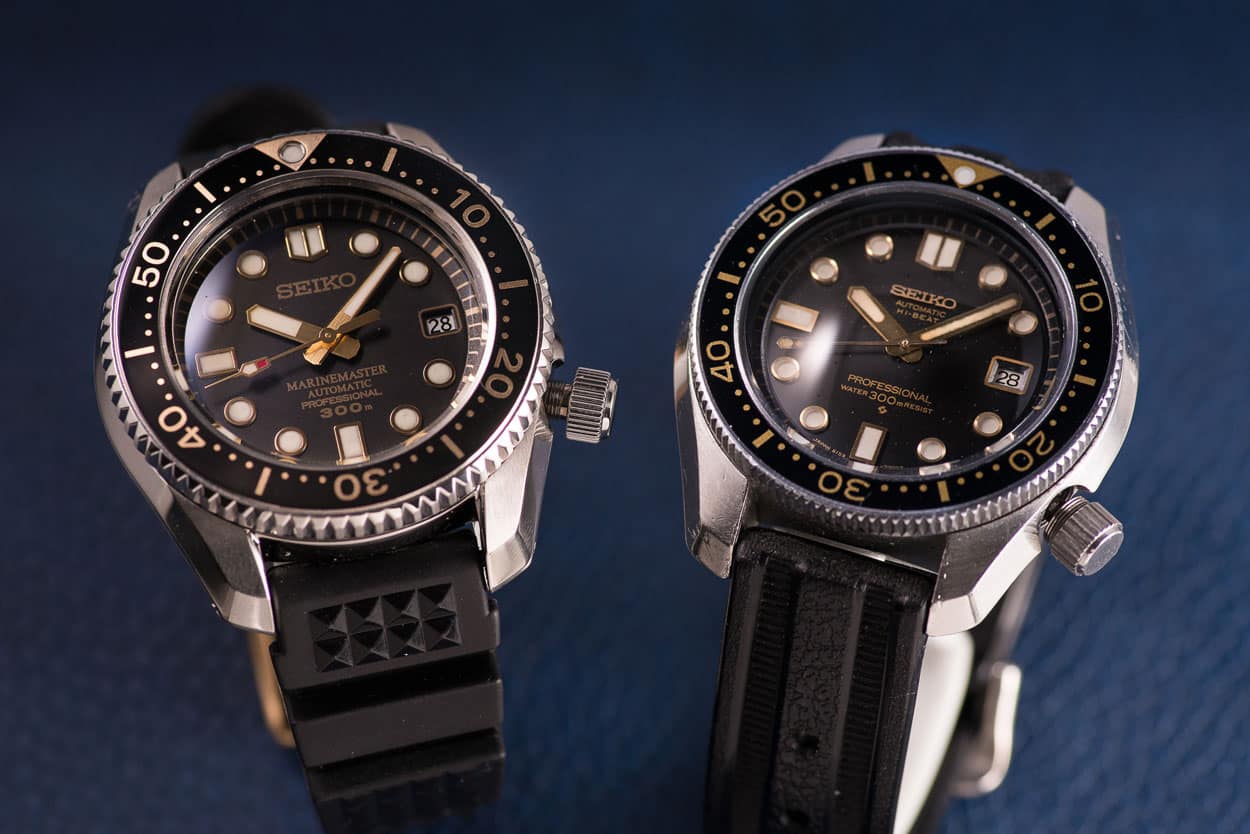
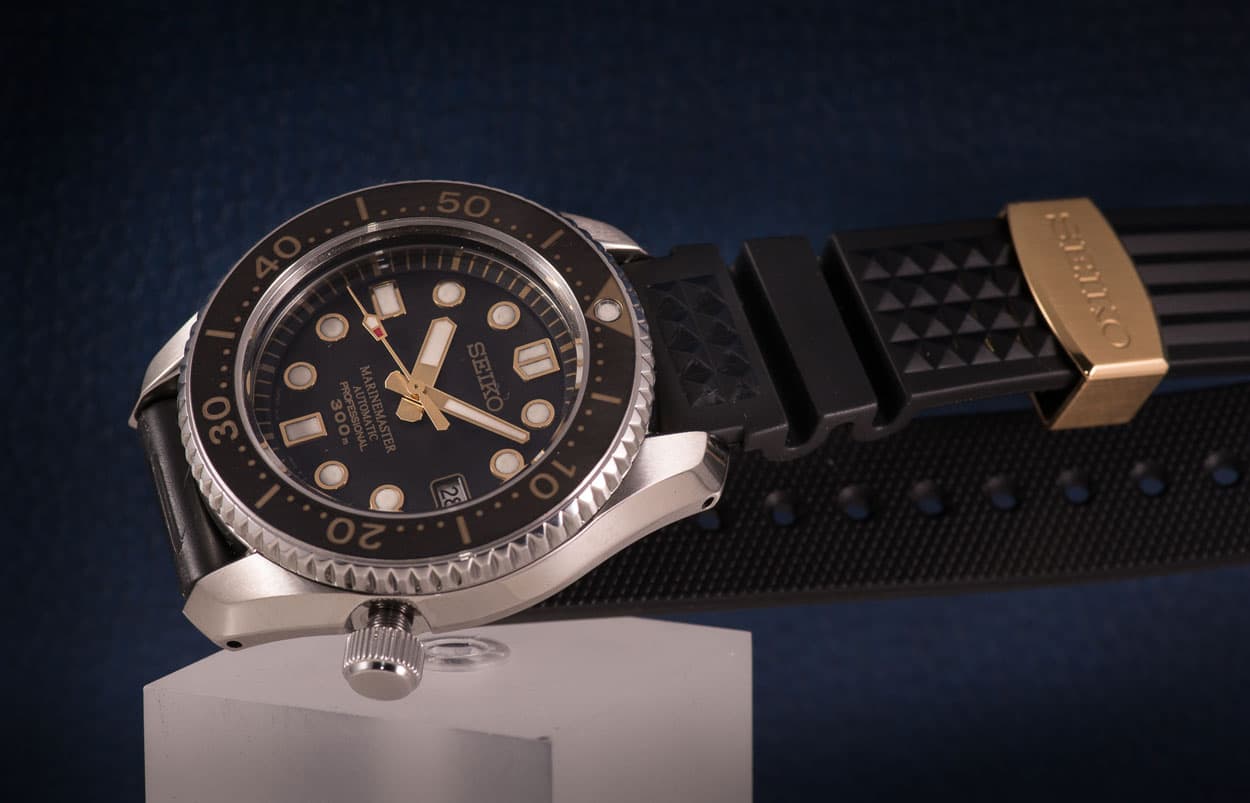 More information on the Prospex collection from Seiko here. Please find the image gallery below, all pictures can be clicked for larger versions.
More information on the Prospex collection from Seiko here. Please find the image gallery below, all pictures can be clicked for larger versions.
All photos by Fratello Wathches, except for the Seiko Marinemaster 300 SBDX012 50th Anniversary edition, by Kenneth Ho.

